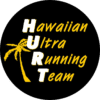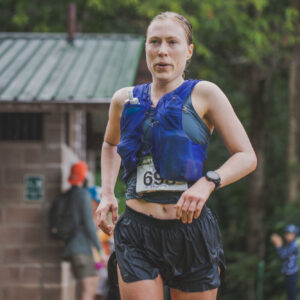Makiki Watershed Awareness Initiative (WAI) Workday This Saturday
Aloha HURT Runners!
For all of you headed over for Run to the Sun, have a Great Race!
Am posting the Makiki Wai work schedule for 2006. This is a great opportunity for runners and family to "give back" to Na Ala Hele and the trail system we run on.
See you on Maui!
Mike
March Showers Bring April Flowers?
———————-
Volunteers Needed!
Makiki Watershed Awareness Initiative (WAI) Needs You!
Saturday, March 25, 2006
9a.m. – 2p.m. (EVERY FORTH SATURDAY!)
The Oahu Na Ala Hele Trails and Access program and the Hawaii Nature Center are asking volunteers to come and help on a project called the Makiki Watershed Awareness Initiative or commonly know as Makiki WAI ("Wai" Hawaiian for water). The objective of the project is to restore a segment of the Makiki sub-watershed* or ahupua`a* to a "more" native Hawaiian forest. Then use this restored segment as an educational tool for the public to learn more about their watershed and the history of Makiki valley. How is this done? Our first step was to: 1) Improve a portion of Makiki valley sub-watershed by clearing a 2 acre section of the forest and replanting it with native Hawaiian plants. 2) Implement trail improvements including the installation of two major redwood bridges. 3) Established interactive watershed educational displays and signs. 4) Graveled wet portions of the trail. 5) Remove encroaching weeds from native plants. (See media links below). Now we do small to large projects in order to maintain what we started.
We need people like you to keep this project alive. Can?
See ya there
Mahalo & Aloha The Oahu Na Ala Hele Staff.
———————————————————————————————————————————
When: Every forth Saturday of the month.
2006 Schedule:
March 25 – April 22 – May 27 – June 24 – July 22 – August 26 – September 23 – October 28.
What to expect: We work from 9:00am until 2:00pm.
This mouth’s focus will be: Still working on finishing the new Makiki Arboretum trail. Re-attaching Bamboo to back fence with stainless steal wire. As usual, the work will most likely be hot, itchy and dirty but very rewarding! Why go to the gym? When you can come work with us. There are bathrooms and drinking water near by. Families are welcome but young children must be well supervised.
What to bring: Long shirt and pants, bug juice, water, lunch or a snack, gloves and good shoes.
Where: Meet at the Makiki Forestry Baseyard just above the new Hawaii Nature Center building.
Directions: Going East bound on H1: Take the Punahou “Exit 23” then……See below directions.
Going West bound on H1: Take the Wilder “Exit 24”, continue on Wilder to the third light take a right on Punahou. Then……. See below directions.
Continue up Punahou, heading towards the mountains, turn left on Nehoa St. At the first traffic light, turn right on Makiki Street. When you reach the triangle park with a very big tree. Veer onto the left fork, which is Makiki Heights Drive. Continue for approximately 0.5 mile until the road makes a sharp hairpin turn to the left (look for a row of mailboxes on the right side of the road). At the hairpin turn, continue straight ahead through a green iron gate (there is a sign that says Makiki Forest Recreation Area). Continue to a closed second green gate that says "Service Road" Volunteers are allowed to access through this gate (that means you!). The gate is unlocked but make sure to put the chain back on the post after you go trough. Continue just past the new Hawai`i Nature Center on the right where you will find a parking area for you to park. You made it! Now walk up through the top most green gate and that is the forestry baseyard.
Note: Updates can also be found on our Web page: www.hawaiitrails.org See "Click here for announcements" link at the bottom of the Oahu webpage.
For more information please call Aaron Lowe at 973-9782.
———————————————————————————————————————————-
Volunteer feedback:
"Working as a volunteer with the Na Ala Hele program is a totally satisfying experience. The work projects are well prepared in advance; the right tools for the job are always there; safety is paramount; and instructions are clear and concise. The best part is the feeling of contribution to not only well designed trails for visitors and locals, but a fine interpretive program displaying the best of native Hawaiian plant life." Ron Walker
____________________________________________________________________________________
"Why do we volunteer with Makiki WAI? It’s not because it’s particularly easy or fun. It’s because it is the right thing to do. By virtue of our presence here, we and our families are part of this ‘aina, and it is a part of us. This land and its unique plants have evolved over millions of years and in the short time since we humans have arrived, we’ve managed to nearly destroy it. That which we haven’t destroyed, we are endangering. So, volunteering is one way to care for, nurture, and begin to restore our ‘aina. For me, it is also a matter of faith and belief that what we do today — good and bad — will have an effect in the future. The native plants we carefully nurture will reproduce and reclaim their rightful and natural habitat. They certainly won’t if we do nothing …..and, for the free t-shirt!" Tom Rau (FYI- Free shirt if you come and work three times)
—————————————————————————————————————————————————-
"For nearly two years now I have been a regular volunteer for the Makiki Wai watershed protection project, while keeping an extremely busy schedule as a graduate student at the University
of Hawaii, Manoa. Every month this activity refreshes me and gives me a sense of grounding (literally!) with this land and community. I relish the opportunity to escape from my
studies for a half-day to maintain trails and cultivate a garden of native plants, and I feel great satisfaction when I see how the fruits of our efforts are transforming the land into an educational and recreational resource for the community. By volunteering our creative energies we can minimize the ills of urban living, and create healthy links between our forests, our waters, our communities, and our own lives."
Robban Toleno, Master¹s Candidate, Dept. of Anthropology – University of Hawai¹i, Manoa
————————————————————–
Makiki WAI media coverage links:
Advertiser: https://the.honoluluadvertiser.com/article/2003/Apr/16/il/il01a.html
Starbulliten: https://starbulletin.com/2003/06/06/news/index11.html
DLNR PIO Office: https://www.hawaii.gov/dlnr/chair/pio/HtmlNR/05-N08.htm
___________________________________________________________________
* Watershed: A watershed describes an area of land that contains a common set of streams and rivers that all drain into a single larger body of water, such as a larger river, a lake or an ocean.
* Ahupua`a:The original Hawaiian unit of land measurement or division, usually extended from the top of a mountain to the shore in a pie shape, with rights in the adjoining sea waters, providing the occupants with the means of supplying all their needs especially fresh water. The units were often dictated and enclosed within ridgelines. Therefore, the lines that outline a watershed are often the same as an ahupua’a. Technically, a watershed is a hydrologic scientific term and Ahupua is a cultural land division term. By true definition they are very different. However, in a sense they are very similar because the watershed caught or catches all the water and the water was and is to this day our most precious resource then and now.
________________________________________________________________________________
Note: If you do not want to receive these messages just e-mail me alowe@hawaii.rr.com.

